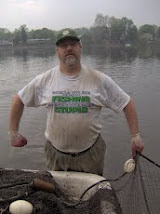LOWLANDS
RAIN FOREST
Although
Costa Rican economics relies on tourism, tourism affects the long-term
biodiversity of the land and the animals. In the fragile ecosystem of
rainforests animals need lots of land to live and sharing it with humans, no
matter how minimal, impacts their world. Costa Rica has over a quarter of the country set aside to protect the land and the animals in reserves and national
parks and the largest is Corcovado National Park on the remote Osa Peninsula. At
164 square miles Corcovado is one of the largest Primary lowland tropical forests in
the world, meaning it has been left alone to grow with little or no disturbance
and that there’s plenty of moisture and rainfall and warmth throughout the
year. Trees here are tall, the ecosystem is complex and the timber and the land
is valuable, but Costa Rica realizes this and the importance of protecting this
invaluable and biodiverse resource. Since 1975 when Corcovado National Park was
formed to protect the area from illegal gold mining and logging, Costa Rica has
taken steps to lessen the impact humans have on the forest and the varied and
abundant wildlife found there by severely limiting entry to a small number of daily
slots.
When we boarded
the M/S Panorama on Saturday almost immediately we were asked whether we were
interested in the Monday excursion to Corcovado, in order to reserve our space.
It’s a 6-hour shore excursion and costs $130 a person, but there was no
hesitation with us as Corcovado is perhaps the greatest place to see such beauty
and an amazing diversity of exotic, rare and endangered wild animals and birds.
Corcovado
is on a remote, isolated and fairly inaccessible corner of Costa Rica on the Osa
Peninsula and part of the diversity of the animals there include all four
species of monkeys found in Costa Rica; Howler, Capuchin, Squirrel and Spider monkeys,
big cats, like jaguars, pumas and ocelots, anteaters, tapirs, coatis and peccaries,
and of course, sloths. There are 16 different hummingbirds and hundreds of
species of birds in Corcovado including the largest number of scarlet macaws
anywhere in Central America as well as the beautiful Resplendent Quetzal, a
bird we had seen many paintings of throughout our travels in Costa Rica with
its overly long tail floating behind it as it flies. Also, the massive Harpy
Eagle makes its home in the upper canopy of the lowland tropical rainforest of
Corcovado. Easily the largest raptor the Harpy is larger than the Bald Eagle,
standing at over three feet tall, it looks like someone wearing a bird costume
and the powerful, strong Harpy has a wingspan that can exceed 7 FEET LONG. Yes,
that’s right, they have a wingspan longer than most humans are tall.
 |
| RESPLENDENT QUETZEL |
 |
| HARPY EAGLE |
Here's a check list of Corcovado animals and plants you'll find if you visit.
CORCOVADO CHECK LIST.
Pura Vida... thanks for reading!
© 2020 by Greg Dunaj

































No comments:
Post a Comment